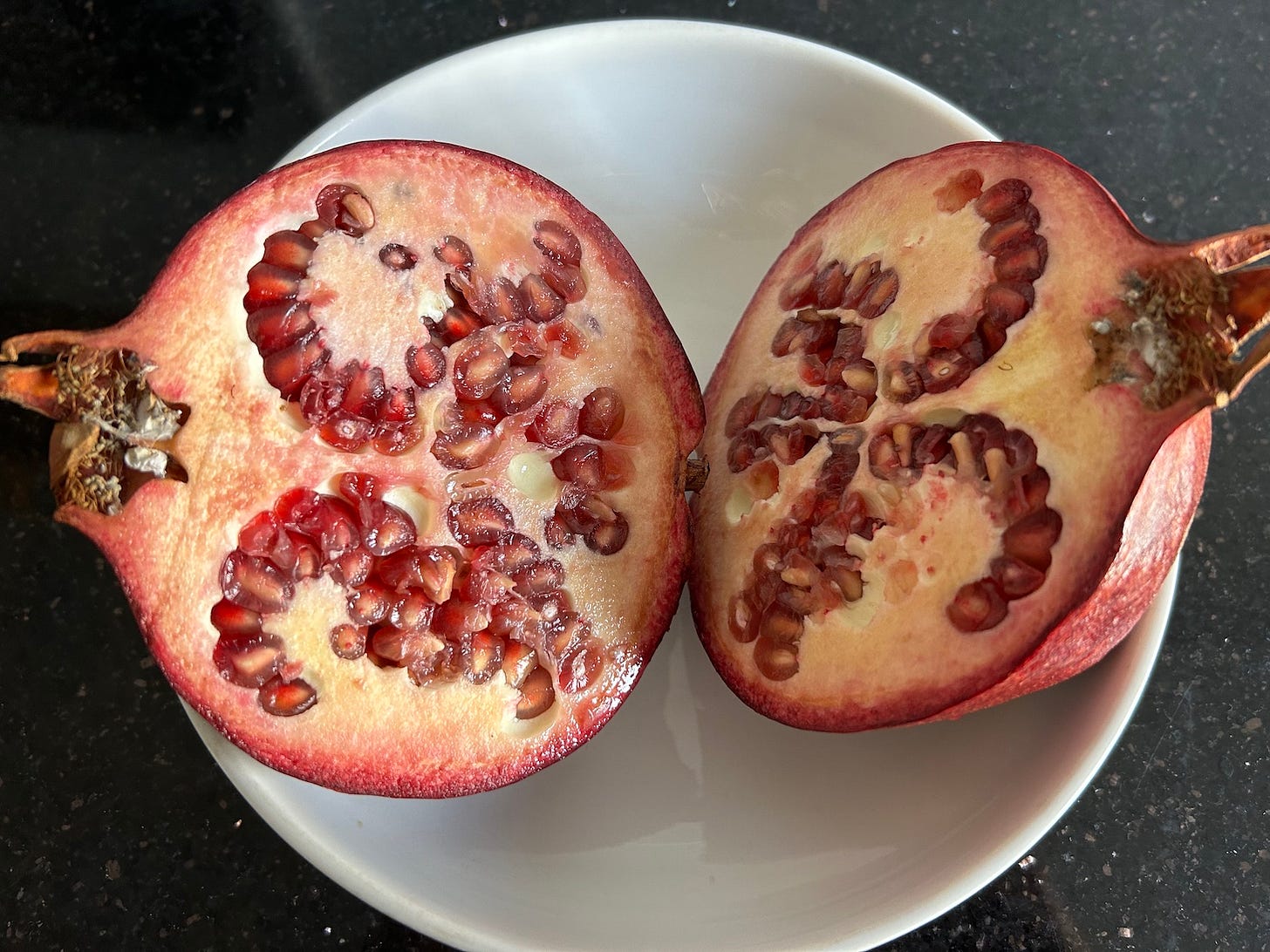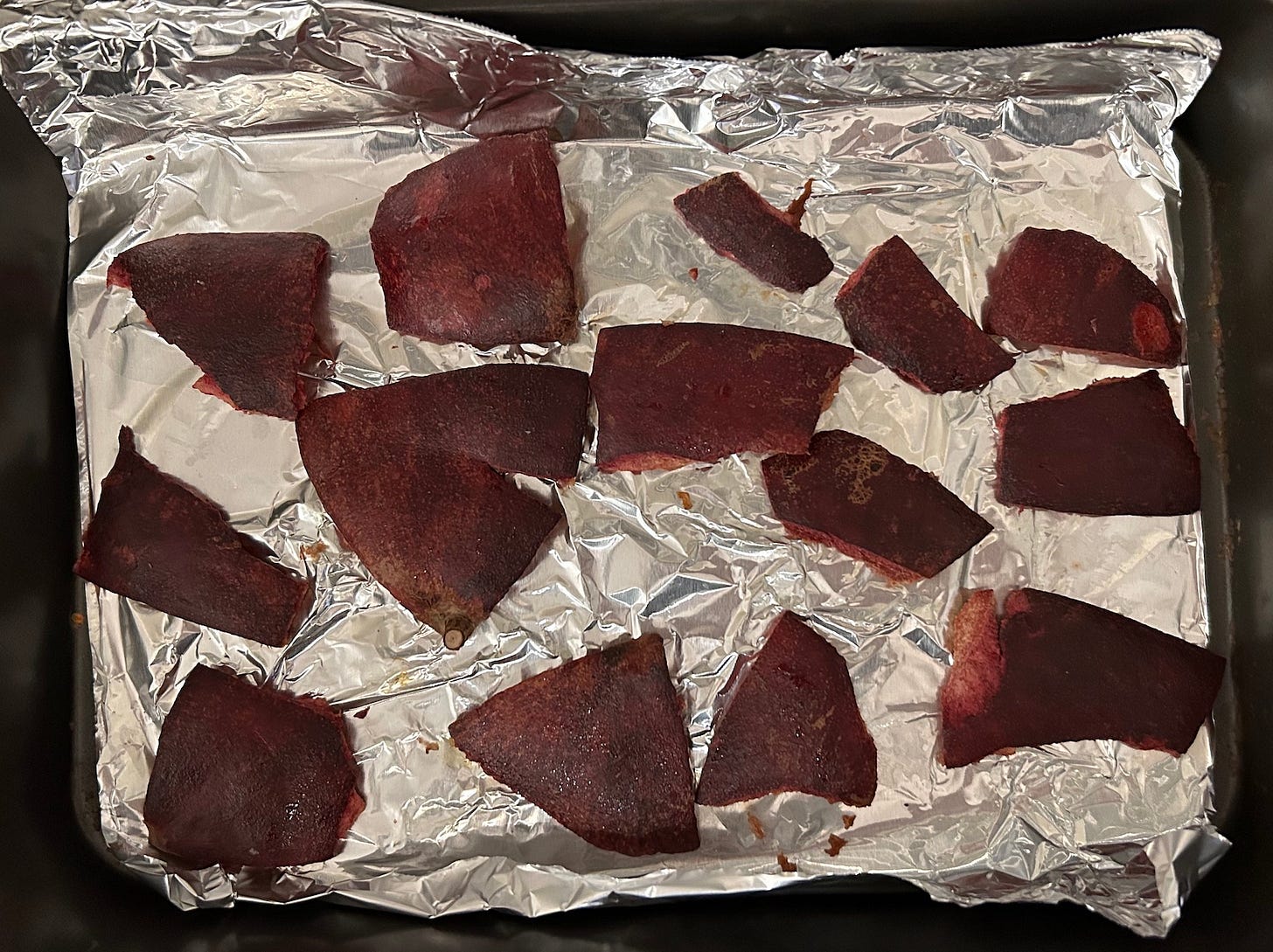Pomegranate Lake
It’s not what you think.
Lake, in this usage, comes from the French word lac, which in Medieval times referred to a red pigment derived from a dye made from the sticky resin excreted by the insect Laccifer lacca. The resin was boiled with alum in urine or lye. After the liquid was poured off, the pigment was allowed to dry and harden, and then it was pounded into a fine powder.
Lake now refers to any pigment made from an organic dye. We can turn a water-soluble dye into an insoluble pigment that can be mixed with different binders to make paint. Useful. Especially for an oil painter.
However, the 15th century painter Cennino Cennini in his “Book of Arts” warned: “There is a red called lake, which is an artificially made pigment. There are many recipes for it; but I advise you pay your money and take the colour ready-made, out of regard to the skilled processes necessary; but be careful to distinguish the best, for there are many sorts of it.”
I am going to assume he was referring only to the red lake made from insect secretions. Onward….
To make a lake pigment you need four things: an organic dye, alum (potassium aluminum sulfate or potassium alum, for example), an alkalizer (soda ash or calcium carbonate, which takes the place of the lye), and water. Several Medieval recipes for pigment use urine. But it was another time.
So the first task was to make a dye. Many plants would do, but pomegranate took my fancy. It was, after all, possibly the fruit that Eve and Adam ate in the Garden of Eden, so it has some history.
An Alchemical Arts video said to use either dried or fresh pomegranate skins. The yellow that resulted in the video was unlike any other pigment I have seen—brighter than yellow ochre, darker than the cad yellows. I decided to dry the skins. I wasn’t sure whether or not to remove the pulp, so I did, saving it in the refrigerator after I noticed it was yellowish and figured I might need it if I didn’t get a deep enough yellow from the skins alone. I spread the skins out in a cake pan and put them in an oven at 170 degrees F. Over the next several hours, I monitored the skins, opening the oven door frequently to let the moisture escape, and turning them over, lest they burn, even though they were pretty much soaking wet.
So it was at this point, roughly 8 hours into the drying process, that I began to wonder why, given that I knew the next step was to steep the skins in simmering water, I was bothering to dry them at all. Maybe the instructions just meant that you could use dried skins if you didn’t have fresh, not that drying them would be in any way a benefit.
I left them on the radiator overnight.





